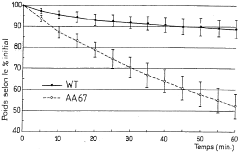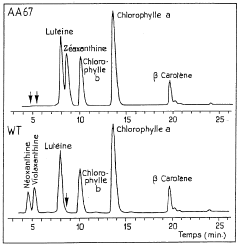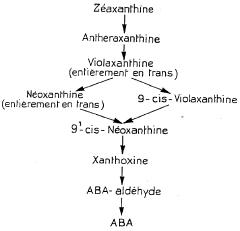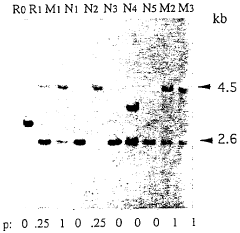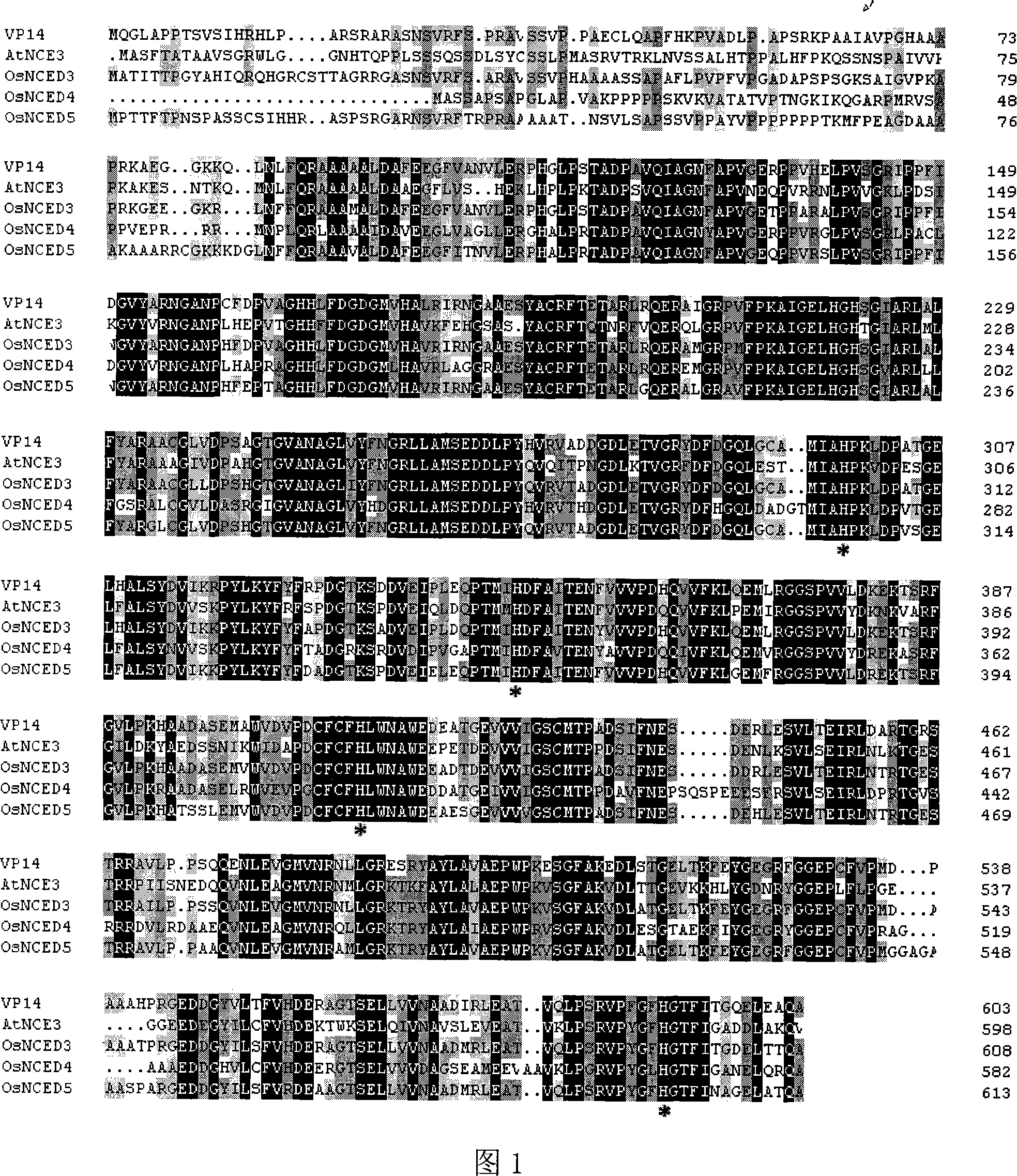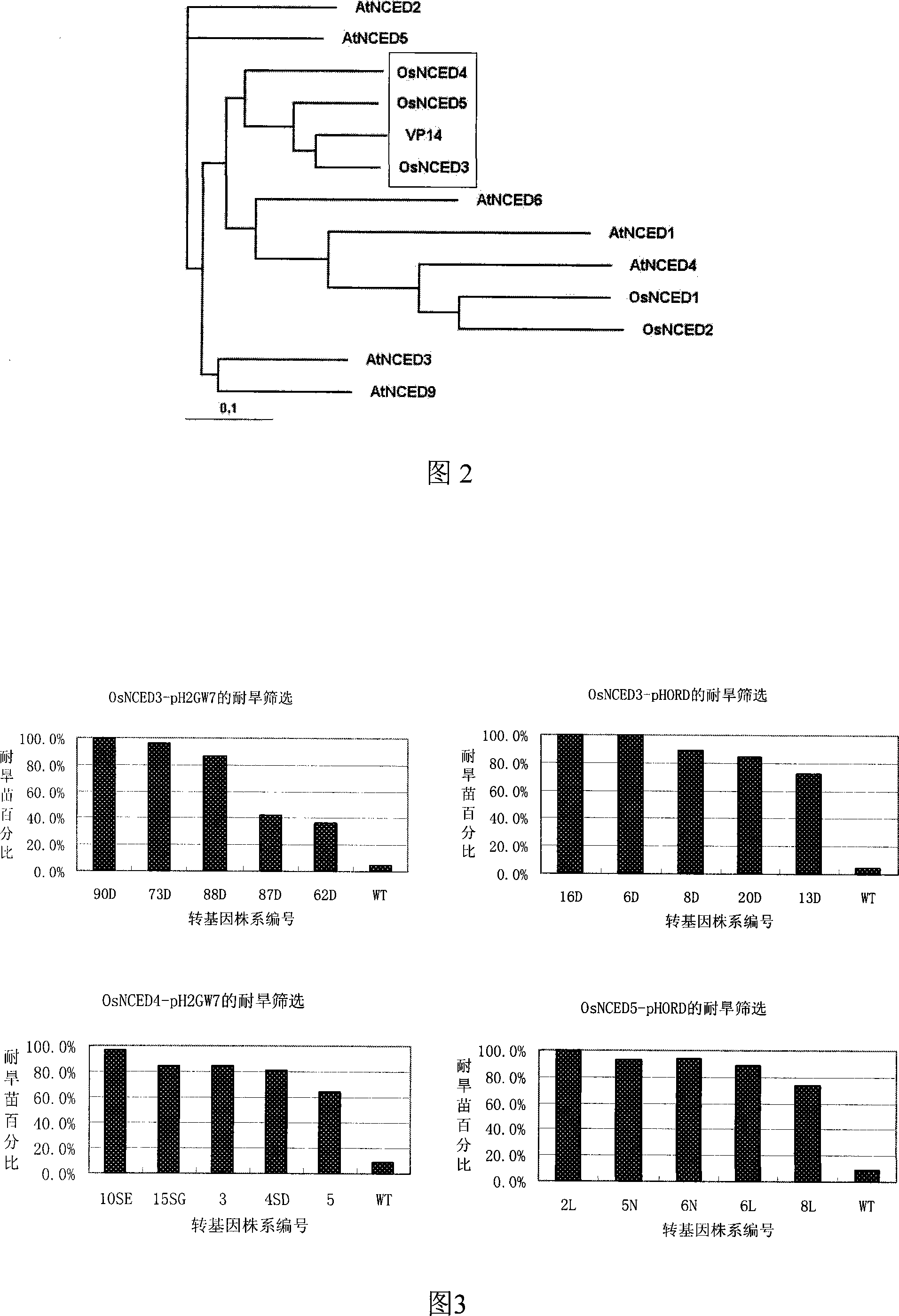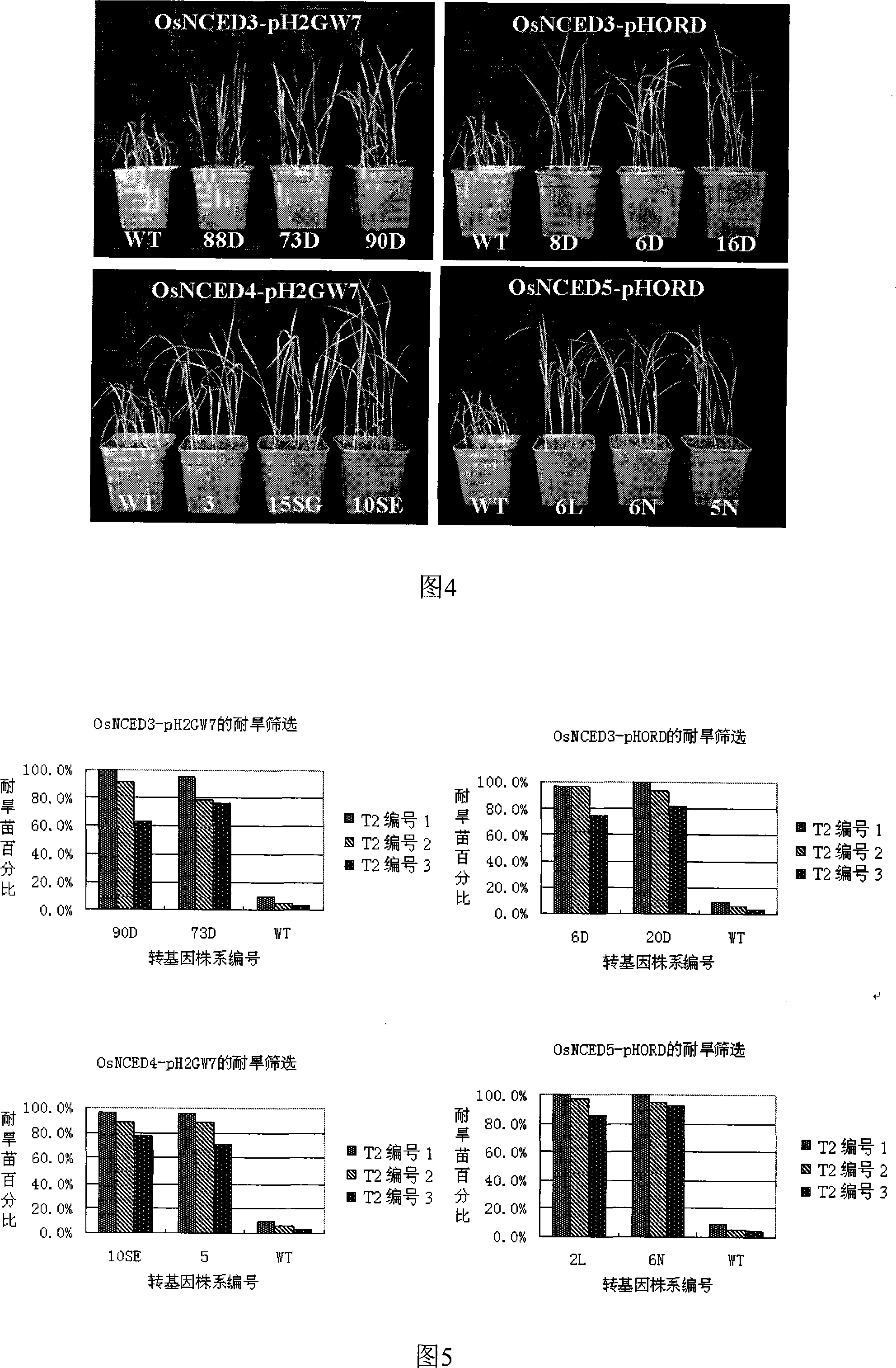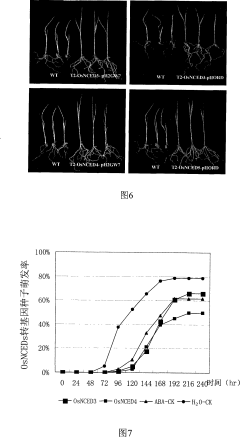Pathways of Abscisic Acid Synthesis: Advances and Applications
JUL 14, 20259 MIN READ
Generate Your Research Report Instantly with AI Agent
Patsnap Eureka helps you evaluate technical feasibility & market potential.
ABA Synthesis Background
Abscisic acid (ABA) is a crucial plant hormone that plays a vital role in regulating various physiological processes, including seed dormancy, germination, and plant responses to environmental stresses. The synthesis of ABA has been a subject of extensive research for decades, with significant advancements in understanding its biosynthetic pathways and regulatory mechanisms.
The discovery of ABA dates back to the 1960s when researchers identified it as a growth inhibitor in cotton fruits and shedding leaves. Initially termed "abscisin II," it was later renamed abscisic acid due to its role in abscission. Since then, scientists have made substantial progress in elucidating the complex pathways involved in ABA biosynthesis.
ABA is a sesquiterpenoid compound derived from carotenoids, specifically from the C40 carotenoid precursor zeaxanthin. The biosynthetic pathway of ABA can be divided into two main stages: the early steps occurring in plastids and the later steps taking place in the cytosol. The conversion of zeaxanthin to xanthoxin marks the first committed step in ABA biosynthesis, catalyzed by the enzyme 9-cis-epoxycarotenoid dioxygenase (NCED).
The importance of ABA in plant development and stress responses has driven extensive research into its biosynthetic pathways. Key enzymes involved in ABA synthesis have been identified and characterized, including zeaxanthin epoxidase (ZEP), NCED, short-chain dehydrogenase/reductase (SDR), and abscisic aldehyde oxidase (AAO). These enzymes work in concert to convert zeaxanthin through various intermediates to the final ABA molecule.
Understanding the regulation of ABA biosynthesis has been crucial for developing strategies to enhance plant stress tolerance and improve crop yields. Environmental factors such as drought, salinity, and temperature fluctuations can trigger increased ABA production, enabling plants to adapt to adverse conditions. This knowledge has paved the way for biotechnological approaches aimed at modulating ABA levels in plants to enhance their resilience to abiotic stresses.
Recent advances in genomics and molecular biology techniques have further expanded our understanding of ABA biosynthesis. The identification of genes encoding key enzymes and regulatory factors has allowed for genetic manipulation of the ABA biosynthetic pathway. This has opened up new possibilities for crop improvement and the development of stress-tolerant plant varieties.
As research in this field continues to evolve, new insights into the fine-tuning of ABA synthesis and its integration with other plant hormone signaling pathways are emerging. These advancements not only contribute to our fundamental understanding of plant biology but also hold promise for addressing global challenges in agriculture and food security.
The discovery of ABA dates back to the 1960s when researchers identified it as a growth inhibitor in cotton fruits and shedding leaves. Initially termed "abscisin II," it was later renamed abscisic acid due to its role in abscission. Since then, scientists have made substantial progress in elucidating the complex pathways involved in ABA biosynthesis.
ABA is a sesquiterpenoid compound derived from carotenoids, specifically from the C40 carotenoid precursor zeaxanthin. The biosynthetic pathway of ABA can be divided into two main stages: the early steps occurring in plastids and the later steps taking place in the cytosol. The conversion of zeaxanthin to xanthoxin marks the first committed step in ABA biosynthesis, catalyzed by the enzyme 9-cis-epoxycarotenoid dioxygenase (NCED).
The importance of ABA in plant development and stress responses has driven extensive research into its biosynthetic pathways. Key enzymes involved in ABA synthesis have been identified and characterized, including zeaxanthin epoxidase (ZEP), NCED, short-chain dehydrogenase/reductase (SDR), and abscisic aldehyde oxidase (AAO). These enzymes work in concert to convert zeaxanthin through various intermediates to the final ABA molecule.
Understanding the regulation of ABA biosynthesis has been crucial for developing strategies to enhance plant stress tolerance and improve crop yields. Environmental factors such as drought, salinity, and temperature fluctuations can trigger increased ABA production, enabling plants to adapt to adverse conditions. This knowledge has paved the way for biotechnological approaches aimed at modulating ABA levels in plants to enhance their resilience to abiotic stresses.
Recent advances in genomics and molecular biology techniques have further expanded our understanding of ABA biosynthesis. The identification of genes encoding key enzymes and regulatory factors has allowed for genetic manipulation of the ABA biosynthetic pathway. This has opened up new possibilities for crop improvement and the development of stress-tolerant plant varieties.
As research in this field continues to evolve, new insights into the fine-tuning of ABA synthesis and its integration with other plant hormone signaling pathways are emerging. These advancements not only contribute to our fundamental understanding of plant biology but also hold promise for addressing global challenges in agriculture and food security.
ABA Market Analysis
The global market for abscisic acid (ABA) has been experiencing steady growth, driven by increasing demand in agriculture and horticulture sectors. ABA, a plant hormone crucial for stress response and growth regulation, has found extensive applications in crop protection, yield enhancement, and plant stress management.
In the agricultural sector, ABA is primarily used to improve crop resilience against abiotic stresses such as drought, salinity, and extreme temperatures. The rising concerns over climate change and its impact on crop productivity have led to a surge in demand for ABA-based products. Farmers and agronomists are increasingly adopting ABA treatments to mitigate crop losses and maintain yield stability under adverse environmental conditions.
The horticulture industry represents another significant market for ABA. It is widely used in fruit ripening, flower abscission control, and dormancy regulation. The growing trend of urban gardening and the expansion of the ornamental plant market have further boosted the demand for ABA in this sector.
Geographically, North America and Europe currently dominate the ABA market, owing to their advanced agricultural practices and high adoption rates of innovative crop protection technologies. However, the Asia-Pacific region is emerging as a rapidly growing market, driven by the increasing need for sustainable agriculture practices in countries like China and India.
The market is characterized by the presence of both established agrochemical companies and specialized biotechnology firms. Key players are focusing on research and development to enhance ABA synthesis pathways, improve product efficacy, and develop novel formulations. Collaborations between academic institutions and industry partners are also contributing to market growth through technological advancements.
Despite the positive growth trajectory, the ABA market faces challenges such as high production costs and regulatory hurdles. The complex synthesis process of ABA and the need for purification contribute to its relatively high price, which can limit widespread adoption, especially in developing countries. Additionally, regulatory frameworks governing the use of plant growth regulators vary across regions, potentially impacting market expansion.
Looking ahead, the ABA market is expected to continue its growth trend. Factors such as the increasing need for sustainable agriculture, growing awareness about plant stress management, and ongoing research into novel applications of ABA are likely to drive market expansion. The development of more cost-effective synthesis methods and the exploration of ABA's potential in new crop varieties present significant opportunities for market players.
In the agricultural sector, ABA is primarily used to improve crop resilience against abiotic stresses such as drought, salinity, and extreme temperatures. The rising concerns over climate change and its impact on crop productivity have led to a surge in demand for ABA-based products. Farmers and agronomists are increasingly adopting ABA treatments to mitigate crop losses and maintain yield stability under adverse environmental conditions.
The horticulture industry represents another significant market for ABA. It is widely used in fruit ripening, flower abscission control, and dormancy regulation. The growing trend of urban gardening and the expansion of the ornamental plant market have further boosted the demand for ABA in this sector.
Geographically, North America and Europe currently dominate the ABA market, owing to their advanced agricultural practices and high adoption rates of innovative crop protection technologies. However, the Asia-Pacific region is emerging as a rapidly growing market, driven by the increasing need for sustainable agriculture practices in countries like China and India.
The market is characterized by the presence of both established agrochemical companies and specialized biotechnology firms. Key players are focusing on research and development to enhance ABA synthesis pathways, improve product efficacy, and develop novel formulations. Collaborations between academic institutions and industry partners are also contributing to market growth through technological advancements.
Despite the positive growth trajectory, the ABA market faces challenges such as high production costs and regulatory hurdles. The complex synthesis process of ABA and the need for purification contribute to its relatively high price, which can limit widespread adoption, especially in developing countries. Additionally, regulatory frameworks governing the use of plant growth regulators vary across regions, potentially impacting market expansion.
Looking ahead, the ABA market is expected to continue its growth trend. Factors such as the increasing need for sustainable agriculture, growing awareness about plant stress management, and ongoing research into novel applications of ABA are likely to drive market expansion. The development of more cost-effective synthesis methods and the exploration of ABA's potential in new crop varieties present significant opportunities for market players.
ABA Synthesis Challenges
The synthesis of abscisic acid (ABA) presents several significant challenges that researchers and industry professionals continue to grapple with. One of the primary obstacles is the complexity of the biosynthetic pathway itself. ABA synthesis involves multiple steps and enzymes, making it difficult to fully elucidate and control the entire process. This complexity also poses challenges in terms of optimizing production efficiency and yield.
Another major hurdle is the regulation of ABA synthesis in plants. Environmental factors such as drought, salinity, and temperature fluctuations can significantly influence ABA production. Understanding and manipulating these regulatory mechanisms to achieve consistent and controlled ABA synthesis remains a considerable challenge. This is particularly crucial for agricultural applications where precise control over ABA levels could enhance crop stress tolerance and productivity.
The stability and storage of ABA present additional challenges. ABA is sensitive to light and pH changes, which can lead to degradation or isomerization. This instability complicates both research efforts and potential commercial applications, necessitating the development of improved stabilization and formulation techniques.
From a biotechnological perspective, scaling up ABA production for industrial applications faces several obstacles. Current methods of ABA synthesis, whether through extraction from plant materials or chemical synthesis, are often inefficient and costly. Developing economically viable large-scale production methods that can meet growing demand while maintaining product quality is a significant challenge.
Furthermore, the specificity of ABA action presents challenges in its application. While ABA plays crucial roles in plant stress responses and development, its effects can vary depending on the plant species, tissue type, and developmental stage. This variability makes it challenging to develop universal ABA-based solutions for crop improvement or stress management.
Lastly, regulatory hurdles and public perception pose challenges to the widespread adoption of ABA-based technologies. As a plant growth regulator, ABA falls under strict regulatory scrutiny in many countries. Navigating these regulatory landscapes while addressing potential public concerns about the use of synthetic plant hormones in agriculture adds another layer of complexity to the advancement of ABA synthesis and application technologies.
Another major hurdle is the regulation of ABA synthesis in plants. Environmental factors such as drought, salinity, and temperature fluctuations can significantly influence ABA production. Understanding and manipulating these regulatory mechanisms to achieve consistent and controlled ABA synthesis remains a considerable challenge. This is particularly crucial for agricultural applications where precise control over ABA levels could enhance crop stress tolerance and productivity.
The stability and storage of ABA present additional challenges. ABA is sensitive to light and pH changes, which can lead to degradation or isomerization. This instability complicates both research efforts and potential commercial applications, necessitating the development of improved stabilization and formulation techniques.
From a biotechnological perspective, scaling up ABA production for industrial applications faces several obstacles. Current methods of ABA synthesis, whether through extraction from plant materials or chemical synthesis, are often inefficient and costly. Developing economically viable large-scale production methods that can meet growing demand while maintaining product quality is a significant challenge.
Furthermore, the specificity of ABA action presents challenges in its application. While ABA plays crucial roles in plant stress responses and development, its effects can vary depending on the plant species, tissue type, and developmental stage. This variability makes it challenging to develop universal ABA-based solutions for crop improvement or stress management.
Lastly, regulatory hurdles and public perception pose challenges to the widespread adoption of ABA-based technologies. As a plant growth regulator, ABA falls under strict regulatory scrutiny in many countries. Navigating these regulatory landscapes while addressing potential public concerns about the use of synthetic plant hormones in agriculture adds another layer of complexity to the advancement of ABA synthesis and application technologies.
Current ABA Synthesis
01 Carotenoid pathway in ABA biosynthesis
Abscisic acid (ABA) synthesis involves the carotenoid pathway as a key route. This pathway includes the conversion of zeaxanthin to violaxanthin, which is then transformed into neoxanthin. Neoxanthin is subsequently cleaved to form xanthoxin, a precursor to ABA. Enzymes involved in this process include zeaxanthin epoxidase and 9-cis-epoxycarotenoid dioxygenase (NCED).- Carotenoid-derived ABA biosynthesis pathway: The carotenoid-derived pathway is a major route for abscisic acid (ABA) synthesis in plants. This pathway involves the oxidative cleavage of carotenoids, particularly 9-cis-neoxanthin or 9-cis-violaxanthin, to produce xanthoxin. Xanthoxin is then converted to ABA through a series of enzymatic reactions. Key enzymes in this pathway include 9-cis-epoxycarotenoid dioxygenase (NCED) and aldehyde oxidase.
- ABA biosynthesis regulation in response to stress: ABA biosynthesis is regulated in response to various environmental stresses, such as drought, salinity, and temperature changes. Stress conditions trigger signaling cascades that lead to increased expression of ABA biosynthesis genes, particularly those encoding NCED enzymes. This regulation allows plants to rapidly increase ABA levels to cope with adverse conditions.
- Genetic engineering for enhanced ABA production: Genetic engineering techniques are used to enhance ABA production in plants. This involves overexpressing key biosynthetic genes, such as those encoding NCED enzymes, or modifying regulatory elements controlling ABA biosynthesis. These approaches can lead to increased drought tolerance and improved stress resistance in crop plants.
- Alternative ABA biosynthesis pathways: While the carotenoid-derived pathway is the primary route for ABA biosynthesis, alternative pathways have been proposed. These include a direct pathway from farnesyl pyrophosphate and a pathway involving the breakdown of larger terpenoids. Research into these alternative pathways aims to fully understand ABA biosynthesis and potentially identify new targets for crop improvement.
- ABA biosynthesis in microorganisms: ABA biosynthesis is not limited to plants; certain fungi and bacteria can also produce ABA. The biosynthetic pathways in these microorganisms may differ from those in plants. Understanding microbial ABA biosynthesis can provide insights into the evolution of this important plant hormone and potentially lead to biotechnological applications for ABA production.
02 Genetic engineering for enhanced ABA production
Genetic modification techniques are employed to enhance ABA biosynthesis in plants. This involves overexpressing genes encoding key enzymes in the ABA biosynthetic pathway or suppressing genes that negatively regulate ABA production. Such genetic manipulations can lead to increased drought tolerance and improved stress resistance in plants.Expand Specific Solutions03 Microbial production of ABA
Microorganisms, particularly fungi, can be utilized for the biosynthesis of ABA. This approach involves culturing selected microbial strains under specific conditions to promote ABA production. The process may include optimizing culture media, controlling environmental factors, and employing genetic engineering techniques to enhance ABA yield in microbial systems.Expand Specific Solutions04 Regulation of ABA biosynthesis
The regulation of ABA biosynthesis involves various environmental and internal factors. Stress conditions such as drought, salinity, and temperature extremes can trigger increased ABA production. Additionally, hormonal crosstalk and circadian rhythms play roles in modulating ABA synthesis. Understanding these regulatory mechanisms is crucial for developing strategies to manipulate ABA levels in plants.Expand Specific Solutions05 Alternative pathways and precursors in ABA synthesis
Besides the main carotenoid pathway, alternative routes and precursors for ABA biosynthesis have been identified. These may include direct pathways from farnesyl pyrophosphate or isopentenyl pyrophosphate. Research into these alternative pathways aims to provide new insights into ABA production and potentially offer novel targets for manipulating ABA levels in plants.Expand Specific Solutions
Key ABA Research Players
The field of abscisic acid (ABA) synthesis is in a mature stage of development, with significant advancements in understanding its pathways and applications. The global market for ABA-related products is expanding, driven by increasing demand in agriculture and plant biotechnology sectors. Technologically, the field has progressed from basic research to practical applications, with companies like Valent BioSciences Corp. and Jiangxi New Reyphon Biochemical Co. Ltd. leading in commercial production. Academic institutions such as East China Normal University and China Agricultural University continue to contribute to fundamental research, while biotechnology firms like Ginkgo Bioworks, Inc. are exploring novel applications. The involvement of major agricultural players like Archer-Daniels-Midland Co. indicates the growing importance of ABA in crop management and food production.
China Agricultural University
Technical Solution: China Agricultural University has made significant advancements in understanding the pathways of abscisic acid (ABA) synthesis. Their research focuses on elucidating the regulatory mechanisms of ABA biosynthesis in plants, particularly under stress conditions. They have developed a novel approach using CRISPR/Cas9 gene editing to manipulate key enzymes in the ABA biosynthetic pathway, such as 9-cis-epoxycarotenoid dioxygenase (NCED) and abscisic aldehyde oxidase (AAO) [1]. This technique has allowed for precise modification of ABA production in crops, enhancing their drought tolerance and water use efficiency. Additionally, they have explored the use of exogenous ABA applications in combination with genetic modifications to fine-tune plant responses to environmental stresses [3].
Strengths: Advanced genetic engineering techniques for ABA pathway manipulation; comprehensive understanding of ABA biosynthesis regulation. Weaknesses: Potential regulatory hurdles for genetically modified crops; limited field testing of modified plants.
Chengdu Institute of Biology, Chinese Academy of Sciences
Technical Solution: The Chengdu Institute of Biology has made substantial progress in deciphering the complex pathways of ABA synthesis. Their research has focused on the identification and characterization of novel enzymes involved in ABA biosynthesis, particularly in the early steps of the pathway. They have successfully isolated and characterized a new isoform of zeaxanthin epoxidase (ZEP), a key enzyme in the initial stages of ABA synthesis [2]. Using advanced metabolomics and proteomics approaches, they have mapped the entire ABA biosynthetic pathway in model plant species, revealing previously unknown intermediate compounds and regulatory checkpoints [4]. Furthermore, they have developed a high-throughput screening system for identifying small molecule modulators of ABA synthesis, which has potential applications in agriculture and pharmaceutical industries.
Strengths: Comprehensive pathway mapping; discovery of novel enzymes and intermediates in ABA synthesis. Weaknesses: Research primarily focused on model organisms; translation to crop species may be challenging.
ABA Pathway Innovations
Nucleic acid fragment coding for an enzyme involved in the abscisic acid (ABA) biosynthesis pathway in plants
PatentWO1996038566A1
Innovation
- Isolation and molecular characterization of an ABA biosynthetic pathway gene, specifically a novel ABA-deficient mutant in Nicotiana plumbaginifolia, which codes for a zeaxanthin epoxidase enzyme, allowing for the manipulation of ABA levels in transgenic plants through genetic engineering.
Clone and application of a gene improving rice drought tolerance and relative with ABA synthesis
PatentActiveCN101173287A
Innovation
- By manipulating the OsNCEDs gene in rice, the synthesis of ABA is regulated, thereby improving the plant's drought tolerance. The protein encoded by the OsNCEDs gene is involved in the biosynthetic pathway of ABA and is expressed in plants through genetic engineering methods to enhance plant tolerance to drought stress.
ABA Regulatory Aspects
Abscisic acid (ABA) plays a crucial role in plant growth, development, and stress responses. The regulatory aspects of ABA synthesis involve complex mechanisms that control its production, distribution, and signaling pathways. These regulatory processes are essential for maintaining optimal ABA levels and ensuring appropriate plant responses to various environmental stimuli.
One of the primary regulatory mechanisms of ABA synthesis is the transcriptional control of key biosynthetic genes. The expression of genes encoding enzymes involved in ABA biosynthesis, such as 9-cis-epoxycarotenoid dioxygenase (NCED) and aldehyde oxidase (AO), is tightly regulated in response to environmental cues and developmental signals. Transcription factors like ABA-responsive element binding factors (ABFs) and ABA-insensitive (ABI) proteins play crucial roles in modulating the expression of these biosynthetic genes.
Post-transcriptional regulation also contributes significantly to ABA synthesis control. This includes mRNA stability, alternative splicing, and translational regulation of ABA biosynthetic genes. For instance, the stability of NCED3 mRNA, a key enzyme in ABA biosynthesis, is regulated by specific RNA-binding proteins that can either enhance or reduce its half-life in response to stress conditions.
The subcellular localization of ABA biosynthetic enzymes is another important regulatory aspect. The compartmentalization of these enzymes in different cellular organelles, such as plastids and the cytosol, allows for precise control over ABA production. This spatial regulation ensures that ABA synthesis occurs in specific cellular locations in response to particular stimuli.
Feedback regulation is a critical mechanism in maintaining ABA homeostasis. ABA can regulate its own biosynthesis through both positive and negative feedback loops. For example, ABA can induce the expression of certain biosynthetic genes, leading to increased ABA production under stress conditions. Conversely, high ABA levels can trigger negative feedback mechanisms to prevent excessive accumulation.
Post-translational modifications of ABA biosynthetic enzymes provide an additional layer of regulation. Phosphorylation, ubiquitination, and other modifications can alter the activity, stability, or localization of these enzymes, allowing for rapid adjustments in ABA synthesis in response to changing environmental conditions.
The integration of various signaling pathways also plays a crucial role in regulating ABA synthesis. Cross-talk between ABA and other plant hormones, such as ethylene and jasmonic acid, can modulate ABA biosynthesis. Additionally, calcium signaling and reactive oxygen species (ROS) can influence ABA production, particularly in response to abiotic stresses.
Understanding these regulatory aspects of ABA synthesis is essential for developing strategies to enhance plant stress tolerance and improve crop productivity. By manipulating these regulatory mechanisms, researchers can potentially fine-tune ABA levels in plants, leading to improved drought resistance, water-use efficiency, and overall plant performance under adverse environmental conditions.
One of the primary regulatory mechanisms of ABA synthesis is the transcriptional control of key biosynthetic genes. The expression of genes encoding enzymes involved in ABA biosynthesis, such as 9-cis-epoxycarotenoid dioxygenase (NCED) and aldehyde oxidase (AO), is tightly regulated in response to environmental cues and developmental signals. Transcription factors like ABA-responsive element binding factors (ABFs) and ABA-insensitive (ABI) proteins play crucial roles in modulating the expression of these biosynthetic genes.
Post-transcriptional regulation also contributes significantly to ABA synthesis control. This includes mRNA stability, alternative splicing, and translational regulation of ABA biosynthetic genes. For instance, the stability of NCED3 mRNA, a key enzyme in ABA biosynthesis, is regulated by specific RNA-binding proteins that can either enhance or reduce its half-life in response to stress conditions.
The subcellular localization of ABA biosynthetic enzymes is another important regulatory aspect. The compartmentalization of these enzymes in different cellular organelles, such as plastids and the cytosol, allows for precise control over ABA production. This spatial regulation ensures that ABA synthesis occurs in specific cellular locations in response to particular stimuli.
Feedback regulation is a critical mechanism in maintaining ABA homeostasis. ABA can regulate its own biosynthesis through both positive and negative feedback loops. For example, ABA can induce the expression of certain biosynthetic genes, leading to increased ABA production under stress conditions. Conversely, high ABA levels can trigger negative feedback mechanisms to prevent excessive accumulation.
Post-translational modifications of ABA biosynthetic enzymes provide an additional layer of regulation. Phosphorylation, ubiquitination, and other modifications can alter the activity, stability, or localization of these enzymes, allowing for rapid adjustments in ABA synthesis in response to changing environmental conditions.
The integration of various signaling pathways also plays a crucial role in regulating ABA synthesis. Cross-talk between ABA and other plant hormones, such as ethylene and jasmonic acid, can modulate ABA biosynthesis. Additionally, calcium signaling and reactive oxygen species (ROS) can influence ABA production, particularly in response to abiotic stresses.
Understanding these regulatory aspects of ABA synthesis is essential for developing strategies to enhance plant stress tolerance and improve crop productivity. By manipulating these regulatory mechanisms, researchers can potentially fine-tune ABA levels in plants, leading to improved drought resistance, water-use efficiency, and overall plant performance under adverse environmental conditions.
ABA Environmental Impact
Abscisic acid (ABA) plays a crucial role in plant responses to environmental stresses, making its environmental impact a topic of significant interest in agricultural and ecological research. The synthesis and accumulation of ABA in plants are directly influenced by various environmental factors, particularly drought, salinity, and temperature extremes.
Under drought conditions, ABA levels in plants increase dramatically, triggering stomatal closure to reduce water loss through transpiration. This adaptive response helps plants conserve water and maintain cellular turgor, but it also leads to reduced photosynthetic rates and overall plant growth. The environmental impact of ABA-mediated drought responses extends beyond individual plants, affecting ecosystem water cycles and carbon sequestration on a broader scale.
Salinity stress similarly induces ABA synthesis, enabling plants to cope with osmotic and ionic imbalances. ABA-regulated ion transport and osmolyte accumulation contribute to salt tolerance, influencing plant distribution in saline environments and potentially impacting soil salinity management in agricultural settings.
Temperature extremes, both high and low, also modulate ABA synthesis and signaling. During cold stress, ABA accumulation enhances freezing tolerance through the regulation of cold-responsive genes and metabolic adjustments. In heat stress scenarios, ABA-mediated responses help maintain membrane stability and protein function, influencing plant survival and productivity in warming climates.
The environmental impact of ABA extends to plant-microbe interactions in the rhizosphere. ABA signaling affects root architecture and exudate composition, potentially altering soil microbial communities and nutrient cycling processes. This interplay between ABA-mediated plant responses and soil ecology has implications for sustainable agriculture and ecosystem management.
Furthermore, ABA's role in seed dormancy and germination timing significantly impacts plant population dynamics and species distribution. By regulating seed responses to environmental cues, ABA influences plant community composition and ecosystem resilience to changing climatic conditions.
The cascading effects of ABA-mediated plant responses on ecosystem processes highlight the importance of understanding ABA synthesis pathways in the context of global environmental change. As climate variability increases, the ability of plants to fine-tune their ABA responses may become critical for maintaining agricultural productivity and ecosystem stability.
Under drought conditions, ABA levels in plants increase dramatically, triggering stomatal closure to reduce water loss through transpiration. This adaptive response helps plants conserve water and maintain cellular turgor, but it also leads to reduced photosynthetic rates and overall plant growth. The environmental impact of ABA-mediated drought responses extends beyond individual plants, affecting ecosystem water cycles and carbon sequestration on a broader scale.
Salinity stress similarly induces ABA synthesis, enabling plants to cope with osmotic and ionic imbalances. ABA-regulated ion transport and osmolyte accumulation contribute to salt tolerance, influencing plant distribution in saline environments and potentially impacting soil salinity management in agricultural settings.
Temperature extremes, both high and low, also modulate ABA synthesis and signaling. During cold stress, ABA accumulation enhances freezing tolerance through the regulation of cold-responsive genes and metabolic adjustments. In heat stress scenarios, ABA-mediated responses help maintain membrane stability and protein function, influencing plant survival and productivity in warming climates.
The environmental impact of ABA extends to plant-microbe interactions in the rhizosphere. ABA signaling affects root architecture and exudate composition, potentially altering soil microbial communities and nutrient cycling processes. This interplay between ABA-mediated plant responses and soil ecology has implications for sustainable agriculture and ecosystem management.
Furthermore, ABA's role in seed dormancy and germination timing significantly impacts plant population dynamics and species distribution. By regulating seed responses to environmental cues, ABA influences plant community composition and ecosystem resilience to changing climatic conditions.
The cascading effects of ABA-mediated plant responses on ecosystem processes highlight the importance of understanding ABA synthesis pathways in the context of global environmental change. As climate variability increases, the ability of plants to fine-tune their ABA responses may become critical for maintaining agricultural productivity and ecosystem stability.
Unlock deeper insights with Patsnap Eureka Quick Research — get a full tech report to explore trends and direct your research. Try now!
Generate Your Research Report Instantly with AI Agent
Supercharge your innovation with Patsnap Eureka AI Agent Platform!
